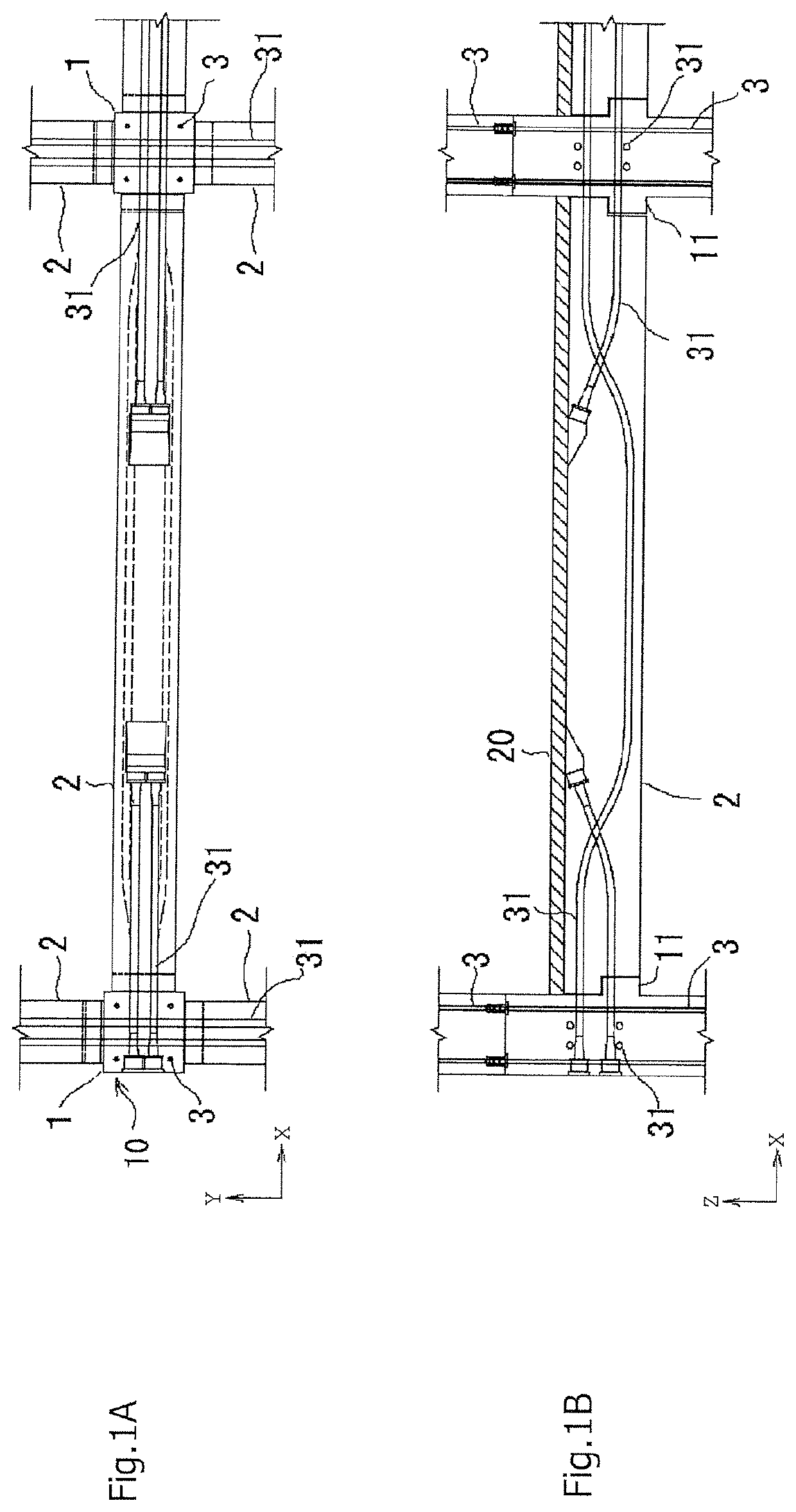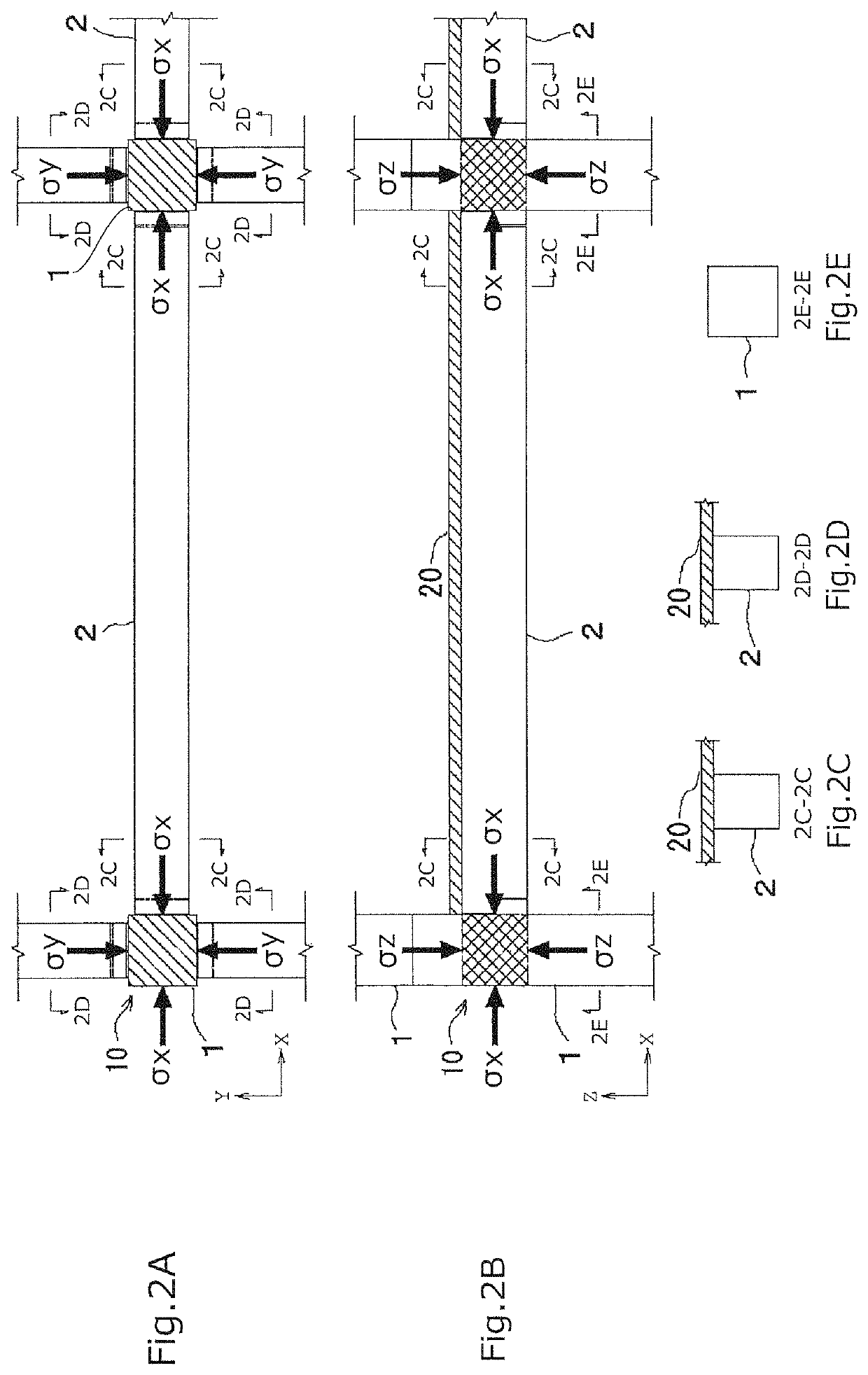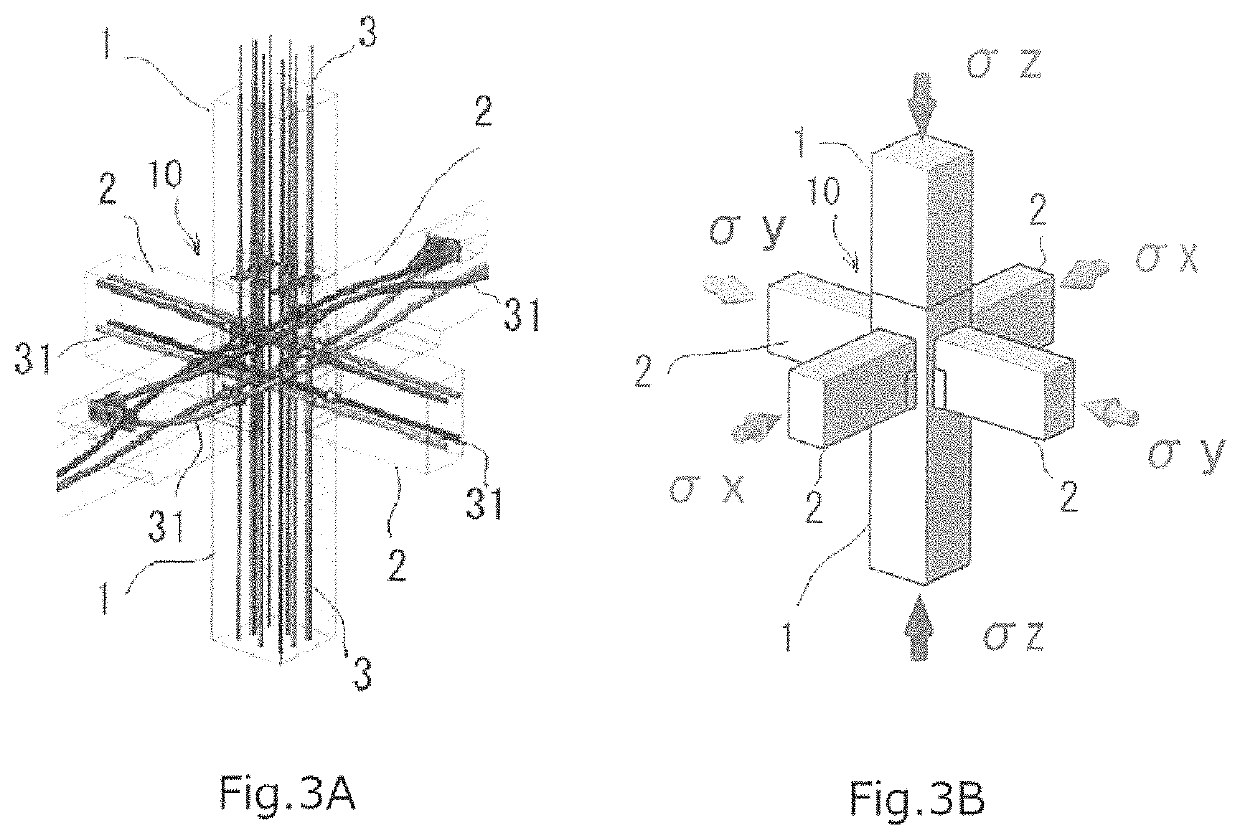Method of introducing prestress to beam-column joint in triaxial compression
a beamcolumn joint and beamcolumn joint technology, applied in the direction of joists, girders, shock-proofing, etc., can solve the problems of fatal shear fractures of the entire structure, brittle fractures without toughness, etc., to prevent diagonal cracks, reasonable and cost-effective designs, and prevent the effect of undue compressive stress intensity
- Summary
- Abstract
- Description
- Claims
- Application Information
AI Technical Summary
Benefits of technology
Problems solved by technology
Method used
Image
Examples
Embodiment Construction
[0040]FIGS. 1A and 1B show a portion of a building to which the present invention is applied. FIGS. 1A and 1B are, respectively, a plan view and a side view of beam-column joints in a middle floor of a multi-story building.
[0041]PC columns 1 and PC beams 2 in the structure shown in FIGS. 1A and 1B are precast members. The PC columns 1 are set upright on the foundation (not shown). Prestressing steel rods 3 serving as prestressing tendons are passed through the PC column 1 and tensionally anchored (in other words, fixed in a tensioned state). The PC beams 2 are set on corbels 11 provided on the PC columns 1. Prestressing cables 31 provided in the PC beams 2 serving as prestressing tendons are passed through the beam-column joints and tensionally anchored.
[0042]As shown in FIGS. 1A and 1B, the prestressing steel rods 3 and the prestressing cables 31 serving as prestressing tendons are passed through the beam-column joint in two horizontal directions (X, Y) and the vertical direction (...
PUM
 Login to View More
Login to View More Abstract
Description
Claims
Application Information
 Login to View More
Login to View More - R&D
- Intellectual Property
- Life Sciences
- Materials
- Tech Scout
- Unparalleled Data Quality
- Higher Quality Content
- 60% Fewer Hallucinations
Browse by: Latest US Patents, China's latest patents, Technical Efficacy Thesaurus, Application Domain, Technology Topic, Popular Technical Reports.
© 2025 PatSnap. All rights reserved.Legal|Privacy policy|Modern Slavery Act Transparency Statement|Sitemap|About US| Contact US: help@patsnap.com



